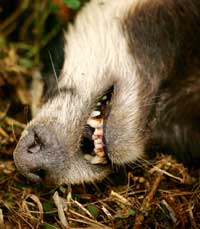Culling badgers ‘not a cost-effective way to stop TB’

Culling badgers is unlikely to be a cost-effective way of combating TB in cattle, according to latest research into controlling the disease.
A study published by scientists from Imperial College London and the Zoological Society of London says that, while widespread badger culls initially cut the incidence of bovine TB, any benefits disappear within four years of the cull being carried out.
The financial costs of administering trapping and killing badgers also means any savings made in cutting herd infections are cancelled out, the study says.
Researchers looked at data from the Randomised Badger Culling Trial, which DEFRA began in 1998 to assess how effective a badger cull could be.
During the study, badger culls were carried out annually until 2005 in 10, 100sq km areas and compared with 10 similar areas where no culling occurred.
The report shows the number of infected cattle inside a cull zone fell by 38% in the weeks after badgers had been culled. But that benefit began to disappear within six months and, by the fourth year, had gone completely.
Researchers also found the number of infected herds in 2km outside the cull areas increased due to perturbation – where usually territorial badgers are disturbed by the culling and move into new areas.
Professor Christl Donnelly, senior author of the study, said carrying out a cull would also cost farmers and government more than they saved in avoiding herd breakdowns in cull zones (see box).
“One method that may be financially viable is licensing of farmers, which costs about £500,000,” she said.
“But culling would be patchy and uncoordinated and if you don’t do it simultaneously there are signs it could cause and increase in TB.
“I would suggest people seriously consider badger vaccination over a long period.”
The costs
| Average herd breakdown (according to 2005 DEFRA figures | £27,000 |
| Amount saved by farmers in a cull zone | £1m |
| Cost of five annual culls, using cages | £2.14m |
